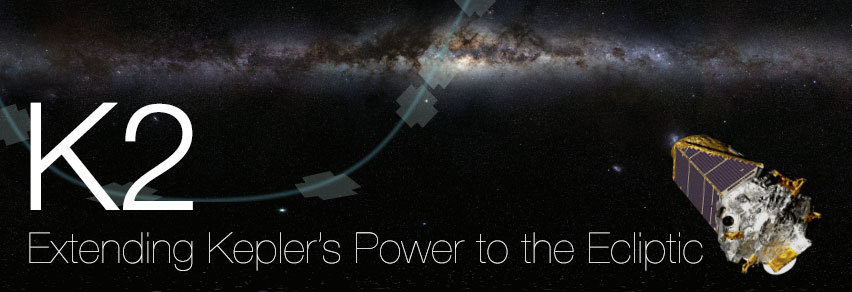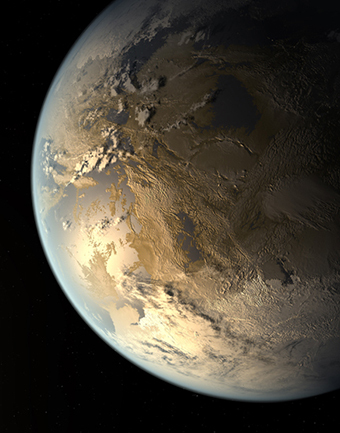
K2 is a NASA mission that provides precise photometric data from numerous target fields in the ecliptic. With an extensive guest observer program, K2 will continue to mine the galaxy for exoplanet and stellar discoveries. Visit the K2 Website »
Facts
- Uses existing spacecraft from the Kepler mission
- Oriented to minimize torque from solar pressure, allowing for precise positioning with thrusters and two reaction wheels
- Will observe numerous target fields across the ecliptic
- 83-day nominal observing periods, with at least 75 days dedicated to science
- All targets are proposed by community through Guest Observer program
- 40 Guest Observer grants awarded annually
- 2-3 year proposed mission (limited by fuel & funding)
- High precision photometric information on planetary, stellar, extra galactic, and solar system objects
- Covers 10x more sky than Kepler mission, for shorter durations
- Will search for exoplanets around nearby bright and M dwarf stars with high value for future follow-up and characterization
Mission
K2 uses the spacecraft built and launched for the Kepler mission, which ended data collection in 2013 after the failure of two of its reaction wheels.
By balancing the spacecraft against solar pressure, K2 is able to achieve precise positioning in three axes despite only having two reaction wheels. The mission plan allows for two to three years of observations with the remaining fuel onboard.
Click for more information about K2's mission and performance.
Science
In each year of operation, K2 will observe over 40,000 targets spread over four fields of view. K2 will collect data at 30-minute and 1-minute cadences and will produce 80-ppm photometry for 12th magnitude stars on 6-hour time scales. K2 will observe in both the northern and southern sky, in and out of the plane of the Galaxy, and cover ten times more sky than the original Kepler mission.
K2 will identify high-value exoplanets for follow-up and characterization, collecting photometric information on tens of thousands of stars in the local neighborhood, and gathering information on stellar clusters, black holes, supernovae, and variable galaxies.
The original Kepler mission found that small planets are the most common type of planet in in our galaxy, and K2 is the first exoplanet mission to be designed with that result in mind, surveying both nearby bright stars and M-dwarfs -- both of which offer significant advantages for future characterization.
Click for more information about K2's science motivations, white papers, and field campaigns.
Guest Observer Program
K2 is truly a community-led mission, with a robust guest-observer program and 40 grants awarded to submitted proposals each year. These grants, in addition to the already existing programs from the Kepler mission, will ensure that the community for K2 is larger and more inclusive than its predecessor.
For more information about K2's guest observer program, click here.





